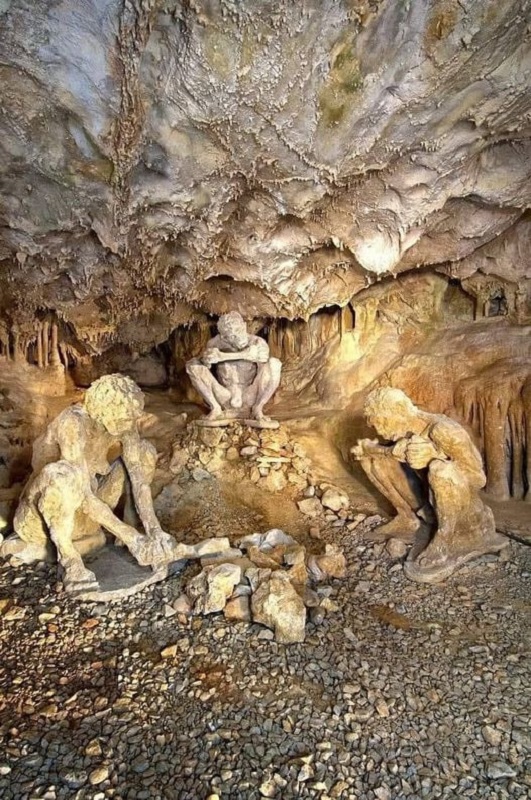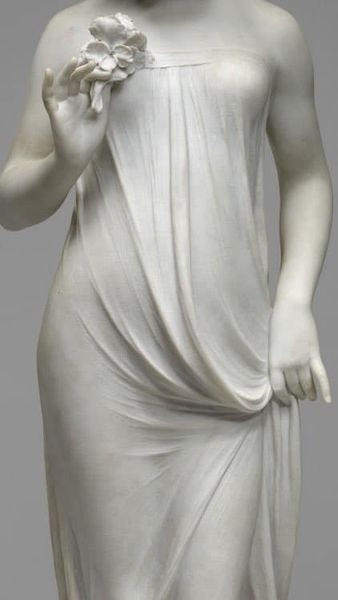In the vibrant realm of American art, few names evoke the opulence and elegance of the Art Deco movement quite like Edward Francis McCartan. Born in 1879, McCartan rose to prominence as a sculptor and illustrator during the early 20th century, leaving an indelible mark on the cultural landscape of his time.
In the vibrant realm of American art, few names evoke the opulence and elegance of the Art Deco movement quite like Edward Francis McCartan. Born in 1879, McCartan rose to prominence as a sculptor and illustrator during the early 20th century, leaving an indelible mark on the cultural landscape of his time. Among his most celebrated works is the exquisite sculpture "Nymph and Satyr," created in 1920. Join me as we journey into the realm of myth and beauty, exploring McCartan's timeless masterpiece and its enduring allure.

The Dance of Myth and Modernity: "Nymph and Satyr" embodies the essence of Art Deco, blending classical mythology with modernist sensibilities to create a work of unparalleled beauty and sophistication. Set against the backdrop of ancient Greece, the sculpture depicts a nymph and a satyr engaged in a graceful dance, their fluid forms captured in exquisite detail. McCartan's mastery of form and composition is evident in every curve and contour, as he infuses the scene with a sense of dynamism and vitality. Through his skillful manipulation of line and texture, he transports viewers to a realm where myth and modernity intertwine, inviting them to immerse themselves in a world of timeless elegance and allure.
A Celebration of Beauty and Sensuality: At the heart of "Nymph and Satyr" lies a celebration of beauty and sensuality, themes that permeate McCartan's body of work. The nymph, with her ethereal grace and radiant charm, epitomizes the idealized feminine form, while the satyr, with his animalistic allure and irrepressible energy, embodies the raw power of masculine desire. Together, they engage in a dance of seduction and surrender, their bodies entwined in a sensual embrace that speaks to the eternal dance of attraction and desire. McCartan's sculptural technique, characterized by smooth lines and sinuous curves, accentuates the sensuality of the scene, inviting viewers to revel in the beauty of the human form and the ecstasy of physical expression.

A Legacy of Artistic Innovation: "Nymph and Satyr" stands as a testament to McCartan's innovative spirit and his contribution to the evolution of American art. Inspired by the classical sculptures of antiquity and the avant-garde aesthetics of the Art Deco movement, McCartan forged a distinctive style that defied convention and captivated audiences around the world. His ability to seamlessly blend tradition with innovation, myth with modernity, set him apart as a visionary artist whose influence continues to resonate to this day. Through his sculptures, illustrations, and designs, McCartan left an indelible imprint on the cultural landscape of the early 20th century, shaping the aesthetic sensibilities of a generation and inspiring countless artists in his wake.
Rediscovering Ancient Inspirations: While McCartan's "Nymph and Satyr" embodies the spirit of modernity, it also serves as a poignant reminder of the enduring influence of ancient mythology on the arts. From the myths of ancient Greece and Rome to the legends of Egypt and Mesopotamia, the stories of the past continue to inspire and captivate artists and audiences alike. Just as McCartan drew upon classical motifs and themes in his work, so too do contemporary artists find inspiration in the timeless tales of gods and heroes, weaving them into narratives that resonate with modern audiences. In this way, ancient discoveries continue to shape the artistic landscape of the present, connecting us to our shared heritage and reminding us of the enduring power of myth and imagination.
In conclusion, Edward Francis McCartan's "Nymph and Satyr" stands as a testament to the enduring allure of Art Deco and the timeless beauty of classical mythology. Through his masterful sculptural technique and innovative vision, McCartan created a work of art that transcends the boundaries of time and space, inviting viewers to immerse themselves in a world of myth and beauty. As we marvel at the grace and elegance of "Nymph and Satyr," let us also celebrate McCartan's legacy as a pioneering artist and visionary thinker whose work continues to inspire and captivate audiences around the world.
Ancient Discoveries: While exploring McCartan's masterpiece, let us not forget the wealth of ancient discoveries that continue to enrich our understanding of the past. From the ruins of ancient civilizations to the treasures of forgotten tombs, each discovery offers a glimpse into the lives and cultures of those who came before us. Whether uncovering lost works of art, deciphering ancient inscriptions, or reconstructing ancient monuments, these discoveries remind us of the enduring legacy of our ancestors and the boundless possibilities of human creativity and ingenuity. As we celebrate the artistic achievements of the present, let us also pay homage to the timeless treasures of the past, where every artifact and artwork tells a story waiting to be heard and shared.










